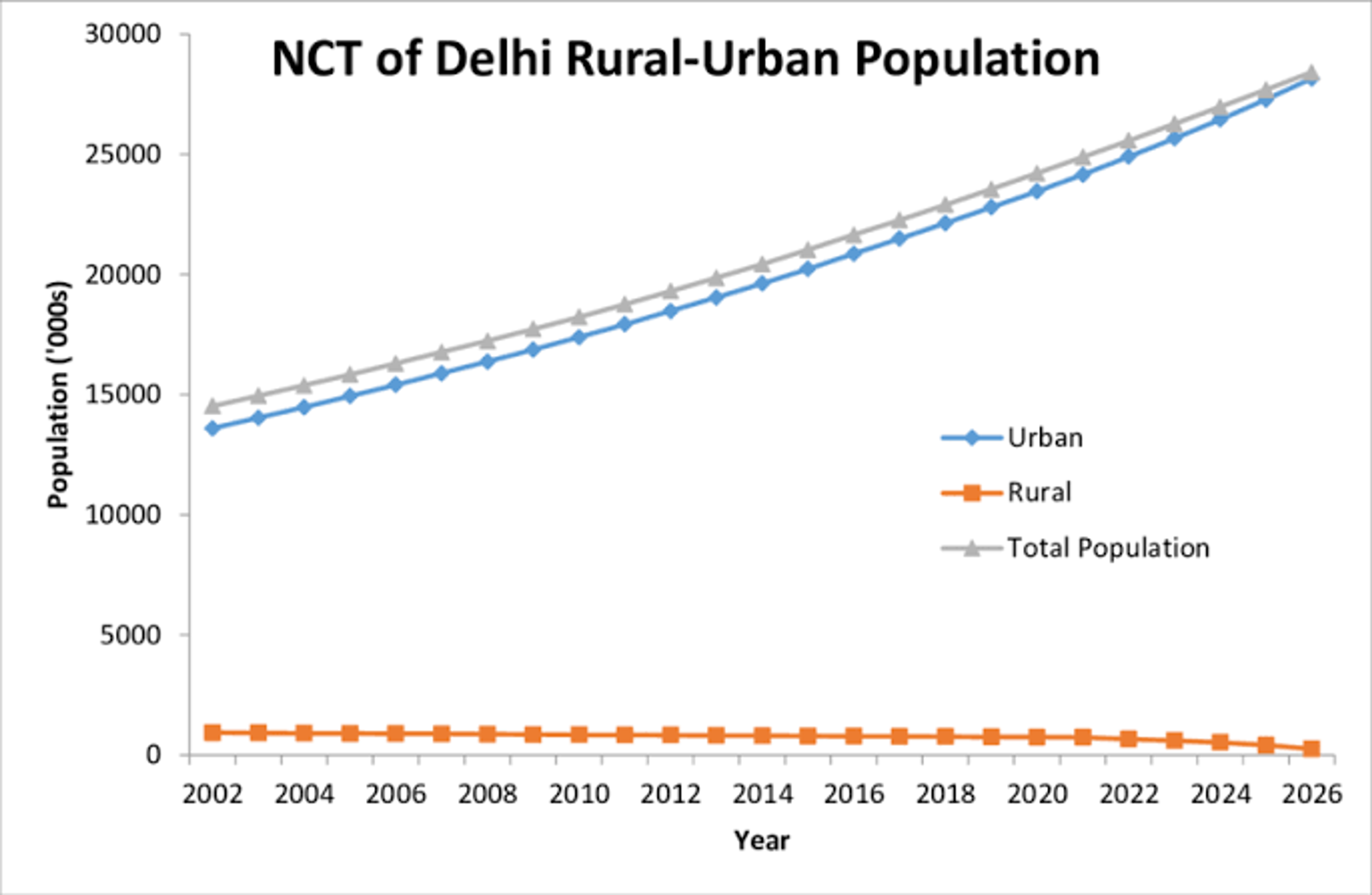Simply put, Urbanism is the study of the people in urban areas and their surroundings. It focuses on the people who live in bungalows, slums, shanties, DDA flats, and housing societies and how these people interact with the urban environment around them. Branches of urbanism may study how workers and new migrants live in an urban environment, what the effects of urban areas are on women, how we can make urban areas safe for children, and much more. Urbanism focuses on the human part of urban development, analyzing the effects of planning and policy on the people. Unfortunately, we have overlooked urbanism in our policymaking, leading to unregulated sprawl and degrading conditions.

Since independence, India has been undergoing a population shift away from sparsely populated rural areas to dense conglomerations of urban areas. Rural areas have declined as a share of the population from 82.1% in 1960 to 64.6% in 2020. In search of better opportunities and employment, millions of people have turned to the cities to look for a constant source of income. It is the question that each policymaker should look to answer: how to regulate the expansion of a city and make it livable for current and future generations?
Urban planning in India has been haphazard, and that is evident in large urban centers like Delhi. Delhi has seen an explosion of population in the past few decades, and new settlements have come up on the periphery, converting large swaths of rural areas into urban areas. On what was once land where crops were grown, industries and suburbs have come up. Growth in Delhi has also spurred the expansion of its satellite cities, such as Gurgaon, Noida, Ghaziabad, etc. As Delhi is set to overtake Tokyo as the largest city in the world, we should think hard about whether we are satisfied with the kind of city we have made and is the idea of Delhi working for all its inhabitants?
Millions of private vehicles drive on the roads in Delhi each day. Because we have normalized the usage of private vehicles for any purpose, Delhi has, over the decades, become a car-centric city. Unless you have a car, it is very difficult to get from one part of Delhi to another. We have built shiny parking spaces to accommodate such cars. Millions are spent to renovate and widen the roads. Elevated roads, underpasses, and signal free traffic flows are all done to cater to the cars in this city. Not only is our environment defiled because of it, but so is the social fabric of our city. Streets have become places to drive and park rather than walk. The habit of car dependence drives up emissions, creates dangerous conditions for pedestrians, and disproportionately affects the marginalized sections of society as new roads slice through these communities.
We have neglected bicycles and public transport in favor of the car lobby. Delhi Metro and the DTC are in poor financial health, yet they don’t figure on the priority list of our leaders. The Magenta line extension was kept on the back burner for the last few years, and the state government instead celebrated that it reopened the Outer Ring Road ahead of schedule. This serves as a chilling reminder about the priorities of our government and bureaucrats.
Not only transit, but housing has suffered too because of our myopic view of development. Due to a lack of enforcement of building codes, discriminatory zoning rules, and housing arrangements in the initial waves of migration, highly dense slums and settlements with narrow streets have become a feature of Delhi. Informal settlements characterized by filthy conditions and a lack of amenities are located in the same city as the majestic houses in New Friends Colony and Rohini. The gap between the rich and the poor is nowhere as visible as in the case of housing. The paradox lies in the fact that there are hundreds of thousands of unalloted low-income housing units in Delhi, yet slums like JJ Clusters are full to the brim. Successive governments have failed to provide affordable housing for people near their workplaces.
It is clear that we, as a city, are standing at a crossroads. We need to decide if we want to continue with the same old way of doing things or forge a new path. We need slum resettlement and dense mixed-use housing (houses and workplaces in the same area). We need to stop building flyovers and instead invest in bus routes that are frequent, reliable, and safe. We need a metro network that provides last-mile connectivity and is able to meet the needs of a growing city. We need transit-oriented development where parks, businesses, and residential areas are built around transit stations. We need to discourage car usage and build accessible commons and leisure spaces without the evils of segregation and discrimination. What we need is a major course correction and to think in terms of people instead of “efficiency”.
Gunjit Verma is a student pursuing Chemistry Hons. from Jamia Millia Islamia.
Edited by: Moneera Aiman







